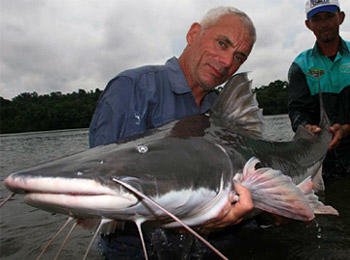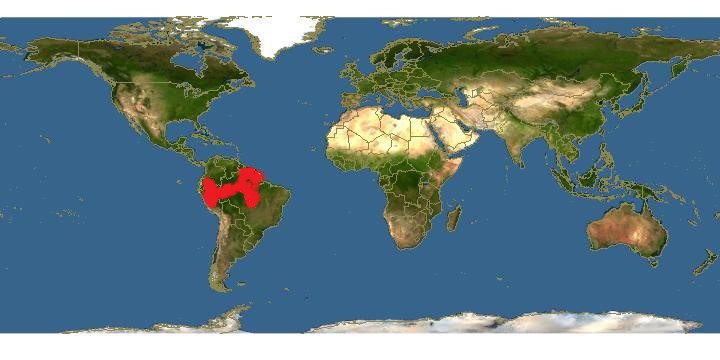Fish facts #16 - Jeremy Wade feat. Piraíba (Lau Lau)[Video]
The Piraíba has poor sight and hearing but its smell and touch are extremely sensitive. The entire body of Lau Lau is covered with taste sensors and its whisker-like barbels are detecting vibrations of prey really effectively. Mainly is feeds on fishes even same species (cannibalism). However exceptional big individuals can feed on rodents, birds, dogs, cats, snakes and amphibians. In some cases in stomachs of Piraíba's there were founded remains of monkey and even humans but those once were most likely scavenged occasionally.
In fishing sport it's considered as really massive and strong fighter which makes this fish perfect trophy for tropical fisherman.
Before you will see the video a short information about this fish.
The Piraíba or Lau Lau (Latin: Brachyplatystoma filamentosum, Lichtenstein, 1819)
Classification
Kingdom: Animalia
Phylum: Chordata
Class: Actinopterygii
Order: Siluriformes
Family: Pimelodidae
Species: B. filamentosum
Distribution
Size / Weight
Max length: 360 cm;
common length: 120 cm;
max. published weight: 200.0 kg;
Environment
Freshwater; brackish;
demersal; potamodromous
Subtropical; rivers;
Short description
It’s distinguished from all other congeners by the following external characters: color pattern in adults strongly but gradually counter-shaded along flanks; dorsum dark to light grey; often small dark spots on caudal-fin or peduncle; color pattern in juveniles comprising small dark spots on and above lateral line; caudal-fin in adults deeply-forked with broad lobes of which the upper is usually longer; eye diameter fits approximately 5-7 times in length of snout; maxillary barbels in adults extending beyond base of adipose-fin, sometimes base of caudal-fin; caudal peduncle compressed with greater depth than width; origins of adipose and anal fins approximately in line; base length of adipose and anal fins approximately equal; adipose-fin approximately height approximately twice its length; opercle sub-quadrangular; 15-17 anal-fin rays.
Biology
Juveniles and sub-adults may be found in brackish water of river mouths. Found on soft bottoms. Feeds on fish. Stomach contents are said to include parts of monkeys. In parts of the Amazon, this catfish occasionally makes prey of a man. Flesh considered excellent quality. Captured using nets and long lines. Threatened due to over harvesting.
Supporting source: http://www.fishbase.org
Video
STEEManians I want to especially thank for supporting:
@gregbit @margaretwise @glitterfart @hilarski @anahilarski @thearcanebear @mynameisbrian @jga @choogirl @linzy13 @cecirod1218@bibek @codypanama @donofa @fishdad
Here you can find some of my other posts/stories:
https://steemit.com/fishfacts/@edekadam/fish-facts-15-jeremy-wade-feat-taimen-video
https://steemit.com/fishfacts/@edekadam/fish-facts-14-jeremy-wade-feat-giant-barracuda-video
https://steemit.com/fishfacts/@edekadam/fish-facts-13-jeremy-wade-feat-the-king-salmon-video
Thanks for checking my posts if you like it vote and leave follow :)




It's a pretty big catfish! big fish
Yep piece of fish :)